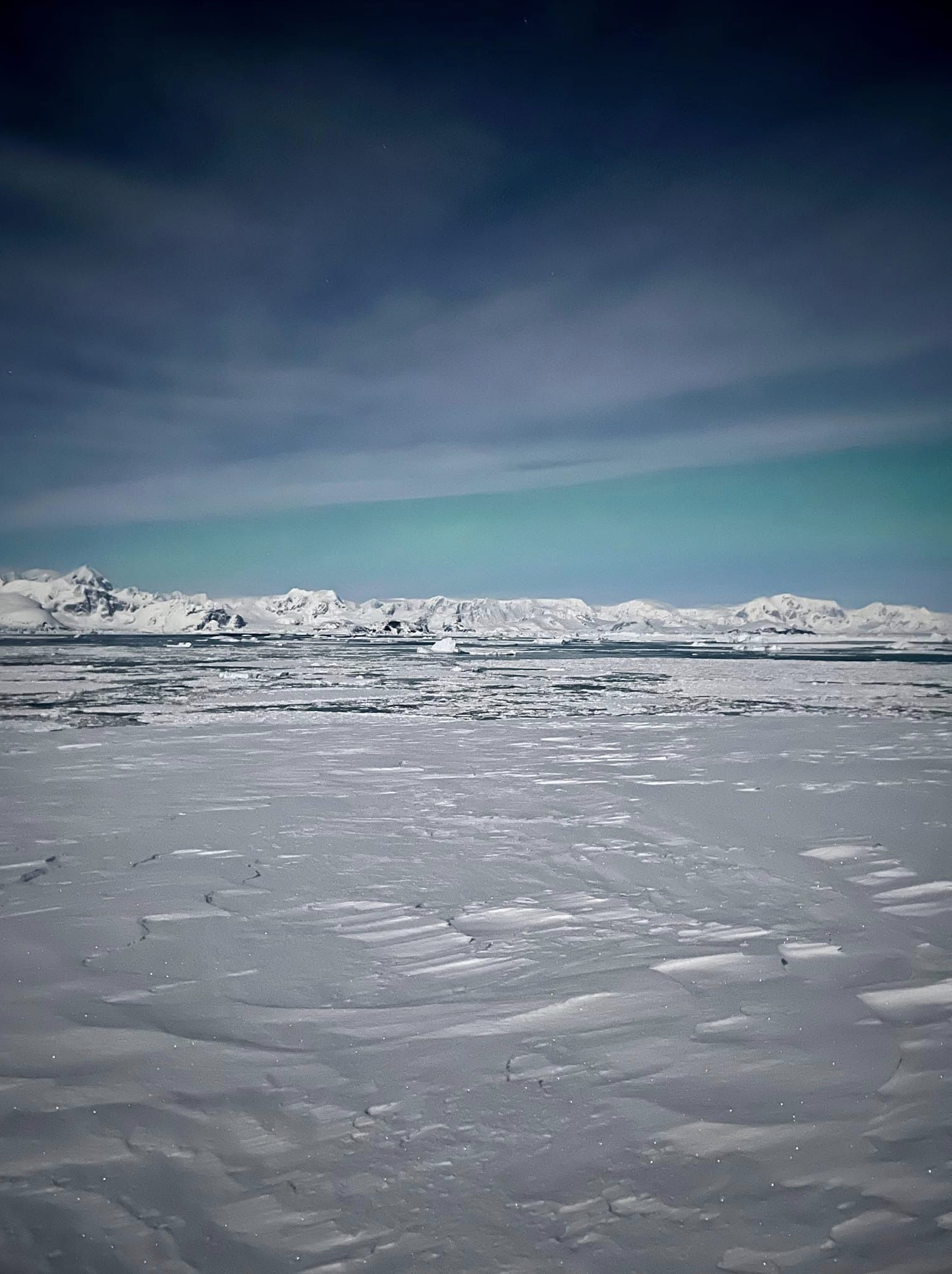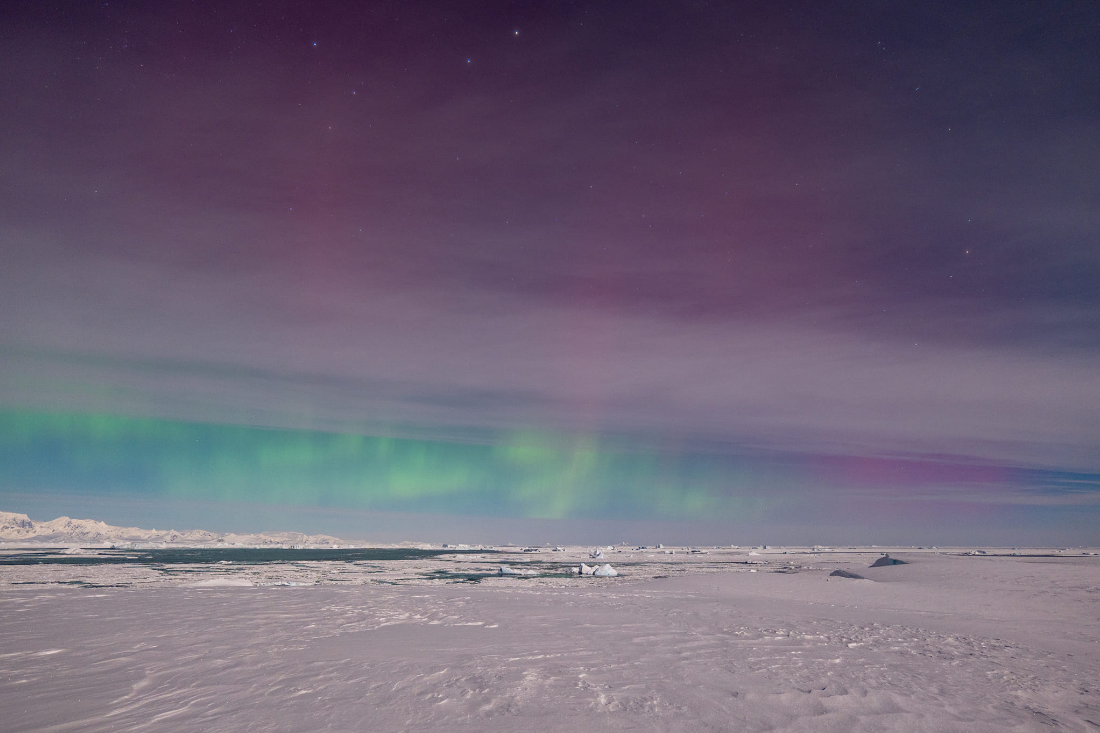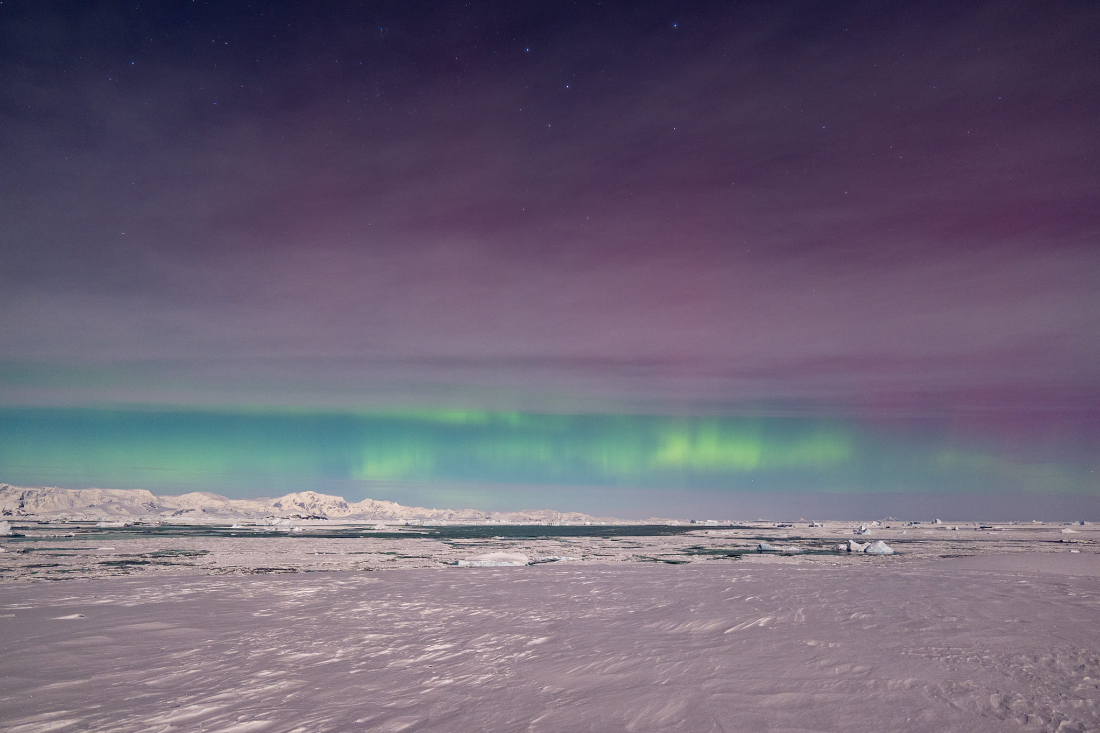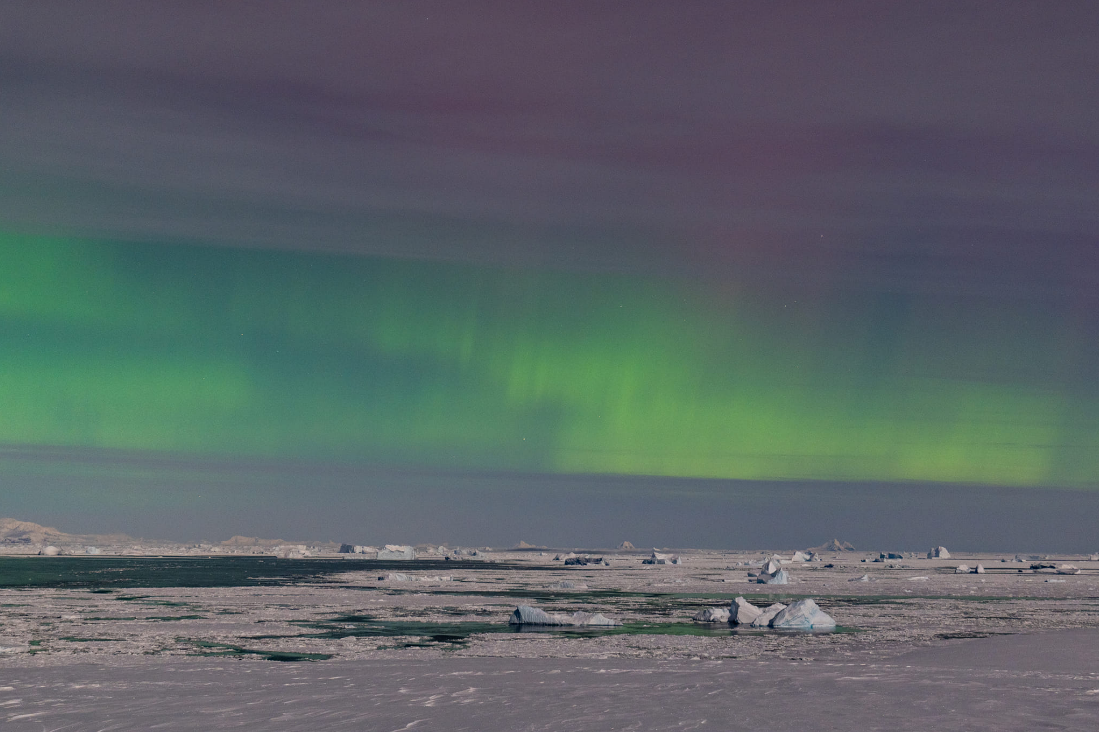Ukrainian polar explorers catch rare southern aurora: Incredible footage
 The aurora borealis is a rare phenomenon (photo: facebook.com/AntarcticCentre)
The aurora borealis is a rare phenomenon (photo: facebook.com/AntarcticCentre)
Recently, Ukrainian polar explorers observed a rare phenomenon near the Antarctic Akademik Vernadsky station - the aurora borealis, according to the National Antarctic Research Centre.
What makes this phenomenon unique
The aurora borealis is a rare phenomenon that Ukrainian polar explorers were lucky enough to see for the second time this year (the first time was in mid-August). Before that, the aurora had not been seen there for about 10 years.
"This is because the Vernadsky area is located quite far from the south magnetic pole, and it is also constantly cloudy," the researchers explain.
It is also specified that several conditions must come together to observe the aurora:
- strong disturbances in the Earth's magnetic field
- the sky is not overcast
- the presence of a dark time of day (because during the Antarctic summer, it is almost always light near the station)
 It is not always possible to see the aurora borealis (photo: facebook.com/AntarcticCentre)
It is not always possible to see the aurora borealis (photo: facebook.com/AntarcticCentre)
How polar explorers caught aurora borealis
"Last night (from September 16 to 17 - Ed.), a magnetic storm of K-7 level according to the Bartels index was recorded at the Vernadsky Geomagnetic Observatory (it describes the deviation of the Earth's magnetic field from the norm over a three-hour interval and can take on values from 0 to 9)," the National Antarctic Research Centre says.
Ukrainian polar explorers immediately went to the place where they managed to capture the aurora a month ago.
 The aurora borealis near the Vernadsky Research Centre (photo: facebook.com/AntarcticCentre)
The aurora borealis near the Vernadsky Research Centre (photo: facebook.com/AntarcticCentre)
"Although the sky was covered with thin clouds and the full moon was brightly illuminating the space, the researchers observed a unique phenomenon for about 15 minutes. Unlike the last time, when the radiance was mostly visible in photos, this time the winterers saw it with the naked eye," the center says.
 A magical sight (photo: facebook.com/AntarcticCentre)
A magical sight (photo: facebook.com/AntarcticCentre)
The relationship between magnetic storms and the aurora borealis
Scientists reminded their readers that magnetic storms are associated with coronal ejections of the Sun - when a huge flow of plasma with a ‘frozen’ magnetic field moves towards the Earth.
It is the interaction between the Sun's magnetic field and the Earth's magnetic field that causes charged particles to ‘spill out’ into the upper atmosphere, which we see as aurora.
 The aurora borealis captured by Ukrainians (photo: facebook.com/AntarcticCentre)
The aurora borealis captured by Ukrainians (photo: facebook.com/AntarcticCentre)
Magnetometric research is one of the main ones at the Akademik Vernadsky station and has been going on there for 70 years.
‘Today, our geomagnetic observatory operates at the highest world level and prepares one-second data in a new format. They are very valuable for the analysis of fast-moving processes and their descriptions and are widely used for satellite research, space weather forecasts, and geomagnetic storms,’ the Antarctic Research Centre said.
It is specified that in the Southern and Northern Hemispheres, the seasons are in opposition. So in August, it was winter in the Antarctic, and now spring has begun.
"We thank Oleksandr Matsibura and Serhii Yakushchenko for the incredible photos, and Yurii Otruba for the information," the center concludes.

Post by the National Antarctic Science Centre (screenshot: facebook.com/AntarcticCentre)
Aurora borealis over Ukraine
In May 2024, a powerful geomagnetic storm allowed people in many parts of the world to observe the aurora borealis, an unusually bright light. Some Ukrainians were not spared this incredible phenomenon.
At the end of July, solar activity picked up again and led to a series of geomagnetic storms. The first to see the aurora were residents of certain regions of Australia and the United States.

